Armstrong, William Nightengale
Killed in Flying Accident 1969-05-29
Service
RCAF
Unit
424 Sqn- Squadron
Castigandos Castigamus Chastise those deserving
Base
Rank
Sergeant
Position
Sergeant
Service Numbers
29037
Boeing CH-113 Labrador (RCAF)/Voyageur (Army)

Boeing Vertol CH-113 Labrador (Serial No. 11302), in formation.
The Boeing Vertol CH-113 Labrador was the RCAF Search and rescue version of the American Model 107-II-9 (CH-46) Sea Knight helicopter. The CH-113A Voyageur was the Canadian Army Assault and utility transport version of the Model 107-II-28 helicopter, later converted to CH-113A Labrador.
The RCAF procured six CH-113 Labrador helicopters for the SAR role and the Canadian Army acquired 12 of the similar CH-113A Voyageur for the medium-lift transport role. The RCAF Labradors were delivered first with the first one entering service on 11 October 1963. When the larger CH-147 Chinook was procured by the Canadian Forces in the mid-1970s, the Voyageur fleet was converted to Labrador specifications to undertake SAR missions. The refurbished Voyageurs were re-designated as CH-113A Labradors, with a total of 15 Labradors ultimately in service.
The Labrador was fitted with a watertight hull for marine landings, a 5,000 kilogram cargo hook and an external rescue hoist mounted over the right front door. It featured a 1,110 kilometer flying range, emergency medical equipment and an 18-person passenger capacity. By the 1990s, heavy use and hostile weather conditions had taken their toll on the Labrador fleet, resulting in increasing maintenance costs and the need for prompt replacement. In 1981, a mid-life upgrade of the fleet was carried out by Boeing Canada in Arnprior, Ontario. Known as the SAR-CUP (Search and Rescue Capability Upgrade Program), the refit scheme included new instrumentation, a nose-mounted weather radar, a tail-mounted auxiliary power unit, a new high-speed rescue hoist mounted over the side door and front-mounted searchlights. A total of six CH-113s and five CH-113As were upgraded with the last delivered in 1984. The last CH-113 was retired in 2004.Harold A Skaarup Web Page
 Wikipedia Boeing Vertol CH-46 Sea Knight
Wikipedia Boeing Vertol CH-46 Sea Knight
 YouTube Labrador Helicopter Boeing Vertol SAR Search and Rescue Demo 1995
YouTube Labrador Helicopter Boeing Vertol SAR Search and Rescue Demo 1995
424 Sqn Castigandos Castigamus ("Tiger")
History of the Squadron during World War II (Aircraft: Wellington III, X, Halifax III, Lancaster I, III)
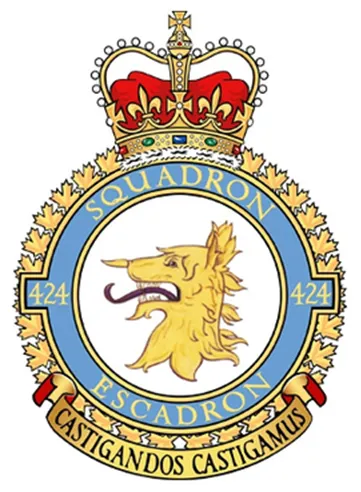
424 Squadron was the sixth RCAF bomber squadron to be formed overseas in WWII, at Topcliffe, Yorkshire, UK on October 15, 1942, originally as part of No 4 Group of RAF Bomber Command. It remained at Topcliffe when it was transferred to the newly-formed 6 (RCAF) Group on January 1, 1943. It moved to Leeming, Yorkshire , and then Dalton, Yorkshire , flying Vickers Wellington Mk III and X aircraft before being dispatched on June 22, 1943 to No 331 (RCAF) Wing of No 205 Group in Tunisia (Kairouan/Zina and Hani East airfields), from where it flew in support of the invasions of Sicily and Italy. It returned by sea to Skipton-on-Swale, Yorkshire in October/November 1943. It re-equipped with Handley Page Halifax Mk III aircraft, which it flew until January 1945, when it re-equipped with Avro Lancaster I and III aircraft. After the termination of hostilities in Europe, the squadron was transferred to No 1 Group, and was employed in operation DODGE, the repatriation of British and Canadian troops from Italy. It was disbanded at Skipton on October 15, 1945, 3 years to the day since its formation.
In the course of hostilities, the squadron flew 3257 sorties for the loss of 52 aircraft. 8776 tons of bombs were dropped. Crew members were awarded 1 DSO, 49 DFC's and 1 Bar to DFC, 1 CGM, 11 DFM's and 1 MiD. Battle Honours were: English Channel and North Sea 1943-45, Baltic 1944-45, Fortress Europe 1943-44, France and Germany 1944-45, Biscay Ports 1943-44, Ruhr 1943-45, Berlin 1944, German Ports 1943-45, Nornamdy 1944, Rhine, Bisacy 1943-44, Sicily 1943, Italy 1943, Salerno.Wikipedia, Kostenuk and Griffin
Squadron History (Bomber Command Museum PDF)
Maps for Movements of 424 Squadron 1942-45
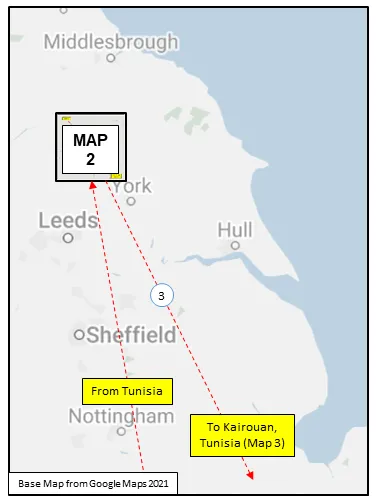 MAP 1: 424 Squadron Movements 1942-45 (right-click on image to display enlarged in new tab) | 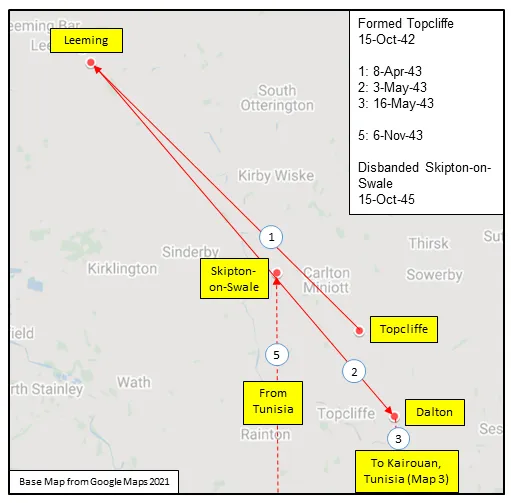 MAP 2: 424 Squadron Movements 1942-45 (detail of Map 1) | 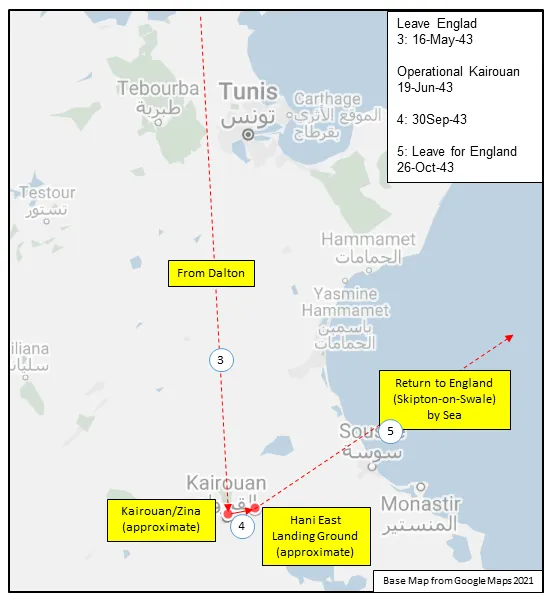 MAP 3: 424 Squadron Movements in North Africa 1943 |
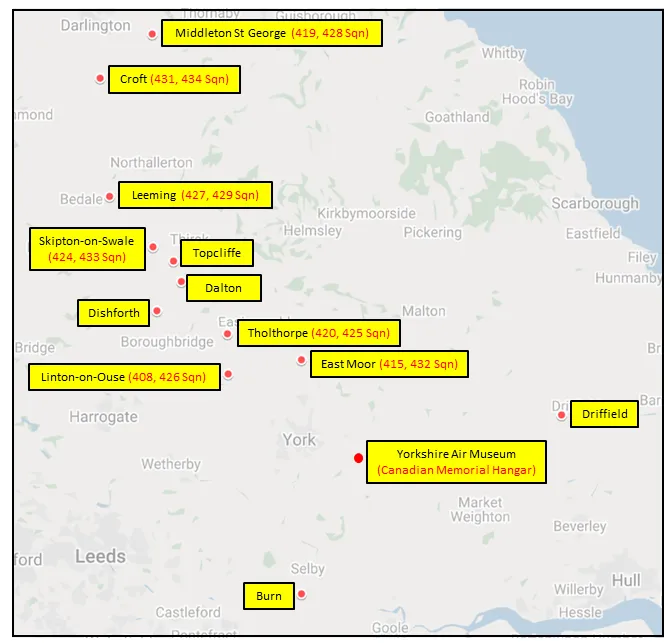
424 Squadron History Summary 1942-45
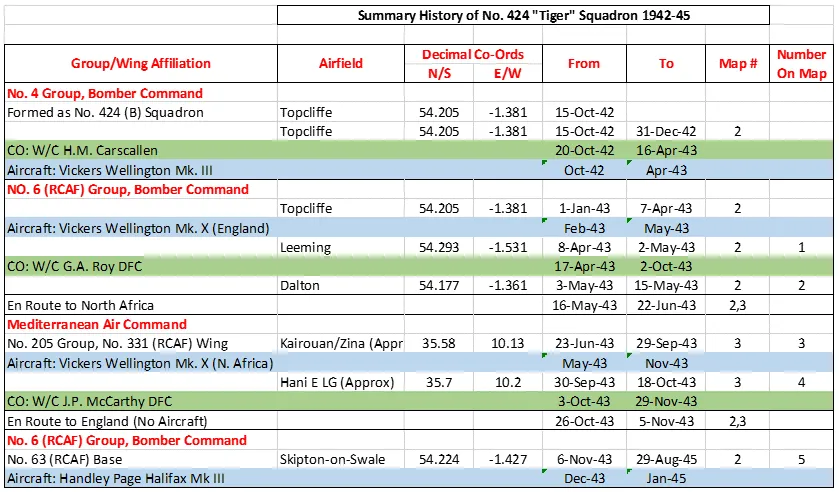
424 Squadron History Summary 1942-45 Page 2

History of the Squadron Post-WWII (Aircraft: Harvard II, Mustang IV, Silver Star 3, Expeditor, Otter, Griffon, Hercules)
The squadron was re-formed at Mount Hope, Hamilton, Ontario on 15 April 1946, as a light bomber unit. It was redesignated as an auxiliary fighter unit on 1 April 1947. It flew North American Harvard II and Mustang IV aircraft in a fighter role, as well as Canadair Silver Star aircraft until 1 September 1957 when it was then reassigned as a light transport and emergency rescue role and re-equipped with Beechcraft Expeditor and de Havilland Otter aircraft. On 21 October 1961 the unit received its Squadron Standard for 25 years’ service as No. 119 and 424 Squadron. A reduction of the Auxiliary Force resulted in the squadron being disbanded on 1 April 1964. On 8 July 1968, with unification of the Canadian Forces, the squadron was reactivated as 424 Communications and Transport Squadron, operating from CFB Trenton, Ontario . The squadron has flown more than 14 different types of aircraft during its history.
424 (Tiger) Squadron is now a Transport and Rescue Squadron based at 8 Wing Trenton. To fulfil its roles, 424 Squadron operates the CH-146 Griffon helicopter and the CC-130H Hercules. 424 Squadron and 435 Transport and Rescue Squadron provide primary search and rescue response for the Trenton Search and Rescue Region (SRR), the largest in Canada. The Trenton SRR extends from Quebec to the British Columbia/Alberta border, and from the Canada/United States border to the North Pole. The Squadron crews one aircraft of each type on standby response posture in order to respond to distress cases as tasked by Joint Rescue Coordination Centre Trenton.
In addition to providing SAR response through a para-rescue capability, the CC-130H Hercules allows the squadron to conduct its transport role in Canada and around the world. The CH-146 Griffon enables rescues and medical evacuations from locations on land and over water. Both aircraft carry Search and Rescue Technicians onboard in order to provide urgent care to those in need. The members of 424 Squadron provide SAR response to incidents under the federal SAR mandate; all aircraft incidents and all marine incidents in waters under federal jurisdiction. They also support humanitarian missions and other SAR organizations when able. Wikipedia and www.canada.ca/en/air-force/corporate/squadrons/424-squadron.html


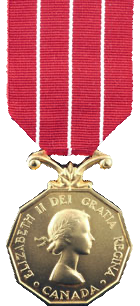
 White Chapel Memorial Gardens, Hamilton, Ontario, Canada
White Chapel Memorial Gardens, Hamilton, Ontario, Canada Canadian Virtual War Memorial
Canadian Virtual War Memorial Harold A Skaarup Web Page
Harold A Skaarup Web Page